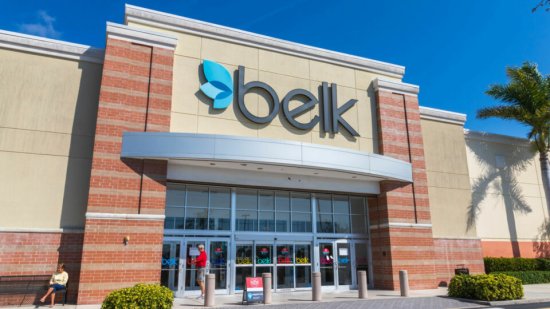A different world. Continue reading
For retailers that sell a wide array of products and also have stores in a fairly large number of markets, advertising has long been both extremely valuable and very complicated. In the two and a half decades that TSI concentrated its work on the advertising departments of these retailers advertising was expensive. Newspapers in major markets charged over $100 per column-inch for ads, and the department stores and big-box retailers bought their ads1 by the page (126-132 column inches), not the column inch. Therefore, the advertising departments were charged by the management of these retailers with 1) negotiating the best rates possible, 2) using the mix of media that provided the most bang for the buck, and 3) designing and producing the ads that produced the most sales.
Most large retail advertising departments were divided into roughly the same areas with which we had become familiar at advertising agencies: media, production, and finance. The years that we had spent working with advertising agencies helped us understand some of their issues. However, the differences were many and complicated:
- A primary difference was that retail advertising was event-based rather than campaign-based. Most retail events were the same from one one year to the next: Presidents Day, Easter, Mother’s Day, Father’s Day, etc. The dates might change a little, but the approaches were usually similar.
- Another fundamental difference was the calendar. Most retailers organized their finances and advertising using a 4-5-4 retail calendar2. The first month of the year was usually February. Most retailers divided the year into two “seasons”, spring and fall. Fall began in August.
- The large organizations had a separate manager for each major media: newspapers, direct mail, and broadcast. A few also had a magazine manager. Inserts (the pull-out flyers in newspapers) were usually treated like direct mail in the production area, but were ordered by the newspaper area.
- Newspapers were much more important for retailers than for other types of businesses, especially in the nineties when potential customers still started their day by reading the local newspaper.
- Each retailer negotiated an annual contract with each paper. The contracts often provided significant discounts for the quantity (column-inches) or nature of the advertising. For example, one retailer got some of its full-page ads in one of its major papers free if it met established criteria for other ads! On the other hand, if a retailer ran too little advertising for the contract period, the penalties could be staggering.
- Not all newspapers were the same dimensions. There were two basic sizes, tabloid and broadsheet, but the actual dimensions varied somewhat. Sometimes ads were just photo-reduced to fit, sometimes different versions were necessary.
- Inserts were included in the contract, but the rules as to how they were counted varied.
- Some ads (called “spreads”) covered two full pages and the marginal area in the middle (“the gutter”).
- Merchandise suppliers often paid for part of the cost of ads that featured their products. This was called “co-op”.
- Most large retailers needed to know the net (of co-op) cost of ads for each merchandise area. The bonuses for the merchandise managers depended upon their sales markups less net advertising expenses.
- Many retailers with a large number of stores needed to know the net (of co-op) cost of ads for each store. This was tricky for markets that included multiple stores.
- Many chains had more than one logo (name on the front of the store). They required different versions for production purposes.
- A few chains had more than one financial entity. This was challenging.
- The financial books absolutely had to be closed within a few days of the end of the month. In some cases, especially in the May Company divisions, a set of corporate reports in specified formats were required every month.
- No agency that TSI had dealt with had a photo studio, but many of the retailers did.
- The production area of most of these retailers borrowed merchandise from the selling departments. The merchandise was sent to a photo studio, either in the department or outside. After the shoot the merchandise needed to be returned or at least accounted for. A special area called the “loan room” or “merch room” managed this activity.
- Most retailers did a high percentage of their business in the second half of November and December. Many of them froze their computer systems (no purchases, no upgrades, no testing) during this period, which might extend in either direction.
- No law specified that every retailer must follow every tenet listed above. Every AdDept installation required some custom code.
The sales pitch: After only two or three installations I had felt comfortable talking with ad agency executives. They generally knew nothing about computers. For the most part they cared little about efficiency; we could almost never point to a position that could be eliminated. It was therefore difficult to persuade them that the computer would save them money. I generally focused on three things: 1) how careful record-keeping could help them locate which clients were unprofitable; 2) how the GrandAd media system would allow improved cash flow; and 3) how a computer system could help if they got a chance to win a big client. I called the last one of these the “reaching for the brass ring” argument.
These arguments did not translate well when we tried to persuade retail advertisers. Usually the retailer had already decided whether or not to get a system for reasons that we could not control. Something had happened that made the current method of handling the work no longer feasible. Macy’s acquisition of the Gimbles stores overwhelmed the system that the advertising department had been using. Hecht’s was in a similar situation after it acquired John Wanamaker. Belk desperately needed help when they consolidated five divisions into one in Charlotte.
Often I would not be acquainted with the circumstances that motivated the important players. I always emphasized the value of having one central set of data to which everyone could contribute and from which everyone could draw. I called this approach “one version of the truth” by which “everyone could benefit from the work done by others.” Everyone could appreciate these notions, but placing a dollar value on the idea of shared data was difficult. Fairly often I would find something in my talks with employees that was horrendously inefficient or even dangerous or illegal, but I could not count on it.
An equally difficult problem was trying to figure out which individual(s) needed to be convinced. In some cases the IT department might not even participate in the software search, but they may have veto power over the final decision. Finding out where the sale stood often required someone from TSI who was willing and able to spend a great deal of time communicating by mail and phone. This was something that I was definitely loathe to do. Fortunately, I found someone, Doug Pease, who was quite good at it. Much more about him is posted here.
One thing that we did not need to worry about was competition. No other software company was crazy enough to attempt to address this market. A few retailers tried to develop something in-house. They all ended up spending millions of dollars or giving up or both.
Difficulties after the installation: I disliked two things about dealing with advertising agencies as clients: 1) It was sometimes difficult to get them to pay their bills; 2) they tended to go out of business or merge with competitors without warning.
We had no problems with retailers paying their bills except when they declared bankruptcy. The first time that this happened I was totally unprepared. A few smaller clients later closed down entirely, but none of these events was catastrophic to TSI.
An equally vexing problem was when one chain of stores acquired another. If the other chain had no system, this usually worked in our favor. If they both used AdDept (TSI’s administrative system for large retail advertising departments described here), we lost one client, but the remaining one usually became more dependent on our support and services. They often also asked us to help with the transition as well.
In the end, however, most of our biggest clients were acquired by Macy’s. The advertising was all managed by one department in New York. That process spelled doom for AdDept because by the time that it happened, Macy’s no longer used AdDept.
One other trend usually produced a little work on the AdDept side, the outsourcing of newspaper buying. We were usually asked to design and implement interfaces with the company that bought the ads. Unfortunately, this same process had a dire effect on AxN, TSI’s method of delivering and managing insertion orders online. When Dick’s Sporting Goods announced in 2014 that it was outsourcing its buying of newspaper space, we decided to shut down TSI.
Decision-making: The ways that decisions were made in retail advertising departments differed fundamentally differed from the way that entrepreneurs like advertising agency executives did. If I could talk to one of the principals at the agency, I could explain why the GrandAd system could produce positive results that could affect 1) the agency’s bottom line, and 2) the agency’s reputation. The situation was totally different in the advertising departments of large retailers.
The department either had a budget for a system or it did not. These were two entirely different cases. If the department had a budget, it was probably because of some huge external factor involving a merger or a takeover. In that case, the eventual purchase was almost a foregone conclusion. The challenge was to fashion a proposal that was within the budget, but not by much.
If the department was not in that position, the process was completely different. The first step was to find a person who had enough authority to requisition funds. This was usually the advertising director. However, advertising directors seldom requested information from us. Our contacts were generally much lower on the totem pole, usually the manager of the business office in the advertising department. So, we would first need to convince our contact and then convince the advertising director either directly, if possible, or indirectly.
We then depended upon the advertising director to requisition the funds. We might not have any idea who would evaluate the request. Sometimes it was someone in corporate finance, sometimes it was someone in the IT department, and in the large organizations approval might be necessary by a holding company such as the May Company, Federated, or Tandy.
At this point it was important for us to recognize which was the case. I was poor at this part of the job, but Doug Pease was much better. If he could connect me with the right person, I could usually frame the arguments for him or her. If no money was available, of course, we probably would not get the sale anyway. During some periods retailers were all tightening their belts. In tough times nobody in retail considered any capital purchase that did not generate sales.
If the final decision needed approval from the holding company, it was extremely difficult for us to influence them directly. In some cases like the May Company and Tandy, it worked out amazingly well for us. TSI’s problems with Federated are documented in detail here.
I began to appreciate the complexity of the situation when one customer told me that “Christmas only comes once.” He meant that the department had a budget at that point, but it had to spend the entire amount in that fiscal year. After that they would be strapped for cash. In general, that was how things worked.
However, some advertising departments had figured out a way around this. They charged the merchandise managers more than the ads cost. I do not know how they accounted for the difference, but they were sometimes had accumulated enough money in this fashion to circumvent the decision-makers in finance and IT. I know for a fact that the AdDept system was financed this way in a couple of cases.
The finance people generally were not upset when they found out about the unauthorized purchase. It was usually easy to determine that AdDept reducee administrative costs fairly rapidly. The IT department, however, might be more upset, especially if the AS/400 was not on their list of approved hardware systems.
Ancillary expenses: For entrepreneurs like ad agencies all expenses came out of the same checking account. The retail advertising departments had a different perspective. Sales tax and travel expenses probably did not hit the advertising department’s line on the income statement. No one ever complained about either type of billing, and they were always paid promptly.
However, the company may have had some rules about travel expenses. I was once grilled about flying first class for a training session. I had to provide proof that I purchased an economy fare and was upgraded by the airline. Some retailers insisted that I stay at a hotel at which they had a special rate. This was usually folly on their part. I liked to stay at Hampton Inns because of the free breakfast and the Hilton Honors points. Hampton’s rates were almost always lower than the “special rate” of the designated hotel.
1. Display ads in newspapers are always called ROP. It is not an acronym; the three letters, which stand for “run of press”, are always pronounced individually.
2. Every week starts with a Sunday. Every month has four or five weeks (twenty-eight or thirty-five days). The purpose of this arrangement and many examples are provided here.







